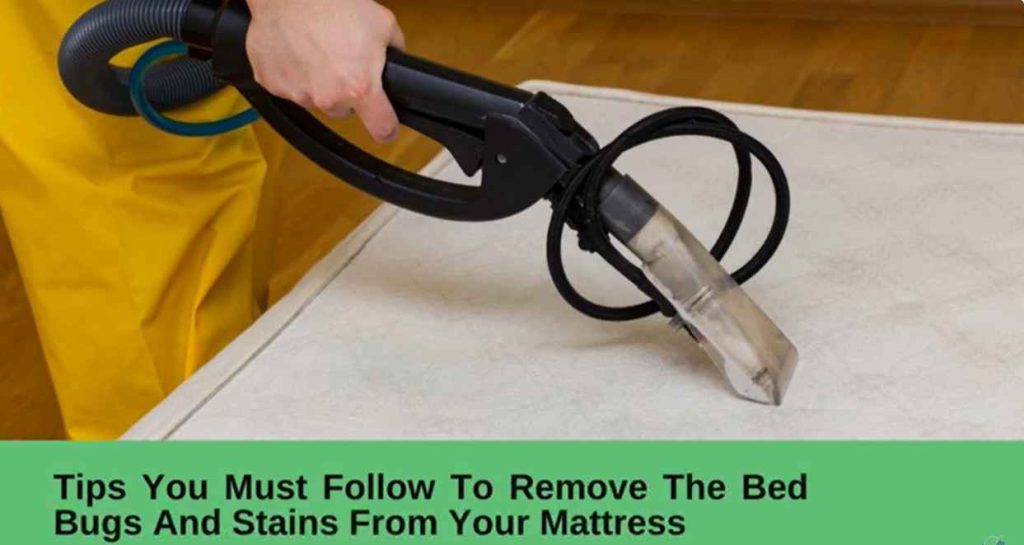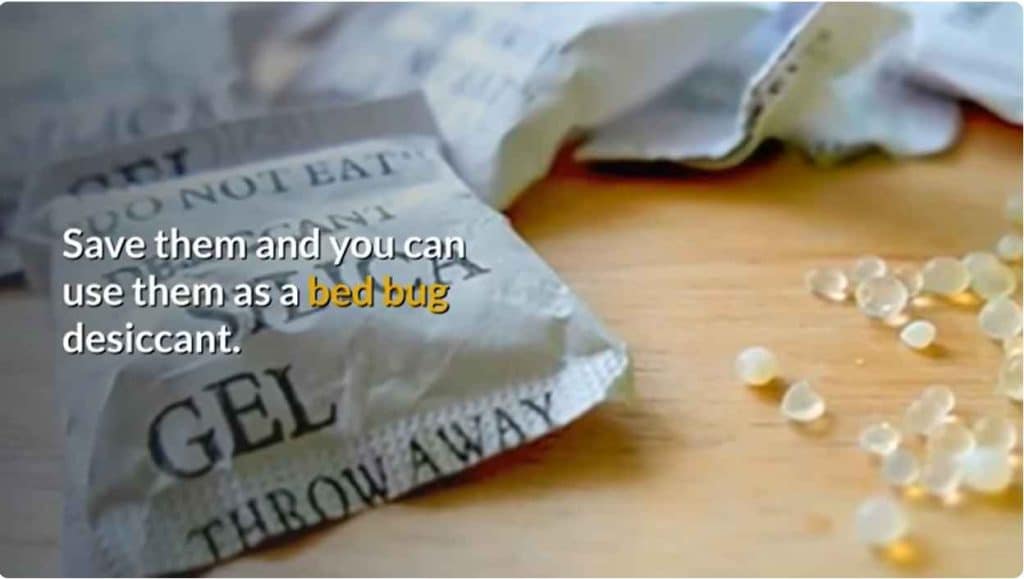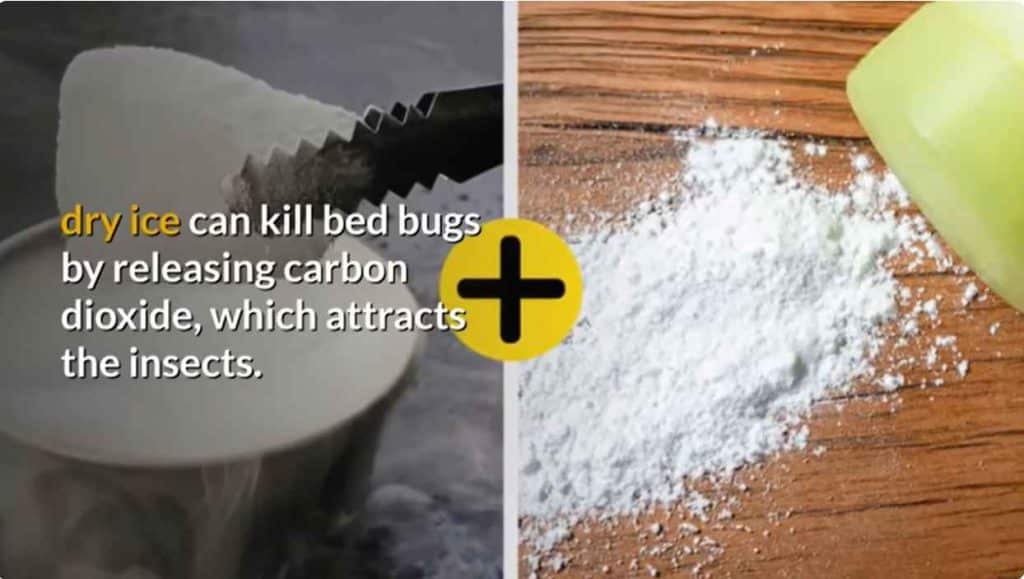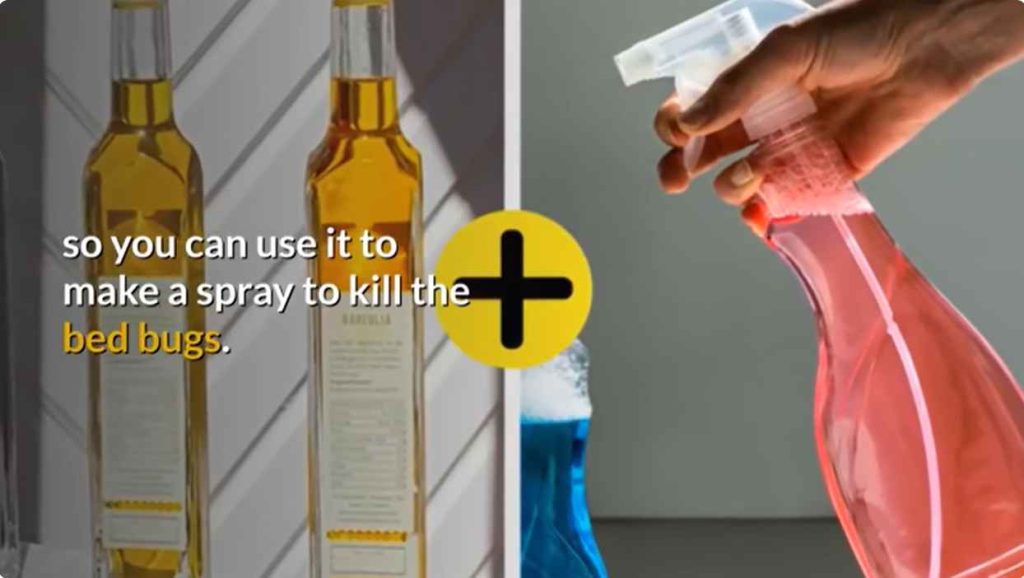To clean a used mattress for bed bugs, start by vacuuming the entire surface. Then, steam clean to kill any remaining insects and eggs.
Bringing a used mattress into your home often comes with the concern of potential bed bug infestations. These tiny critters not only cause discomfort but also pose a risk to your living environment’s hygiene.
A thorough cleaning process is essential to ensure your pre-owned mattress is safe and free from these unwelcome guests.
It’s important to attack both the visible bugs and the hidden ones to prevent future outbreaks. Cleaning a used mattress demands attention to detail and the use of appropriate methods to eliminate all stages of bed bugs from adults to larvae.
By addressing this issue promptly and vigorously, you can enjoy peace of mind while preserving the longevity and comfort of your mattress.
Introduction To Bed Bug Infestations In Second-hand Mattresses
Buying a used mattress can be a smart way to save money. But it comes with risks. One such risk is bed bugs.
These tiny pests could be lurking within, ready to cause discomfort and health issues. Mastering how to clean and protect yourself is key.

Comprehending Bed Bugs And Their Habitats
Bed bugs are small, brownish insects that feed on blood. They hide during the day and come out at night. They love to stay close to where people sleep. Furniture, especially mattresses, are perfect for them.
- Mattress seams – Prime hiding spots for bed bugs
- Box springs – Another favorite bed bug home
- Bed frames – They can hide in crevices here too
- Clutter – More clutter means more hiding spots
Risks Associated With Second-hand Mattresses
Taking in a second-hand mattress without checking it first can be risky. Bed bugs pose health risks. They can cause itchiness and loss of sleep. Also, getting rid of an infestation can be expensive and stressful.
| Risk | Details |
|---|---|
| Health Issues | Itchy bites, allergic reactions |
| Sanitary Concerns | Bed bugs can make a mattress unhygienic |
| Added Costs | Professional cleaning or replacement might be needed |
Inspection: Identifying Bed Bug Presence
Finding bed bugs in a used mattress can be unsettling. Knowing where to look is the first step to a clean, bug-free bed. Bed bugs are experts at hiding.
A thorough inspection is essential. Let’s uncover their hiding spots together.
Visual Signs Of Bed Bugs
Bed bugs leave distinct markers that signal their presence. Here are the signs:
- Small, reddish-brown spots on linen or mattress are telltale signs.
- Tiny eggshells or yellow skins indicate young bed bugs.
- Live bugs or dark, rusty spots of excrement are clear giveaways.
Tools For Thorough Mattress Inspection
Tools help you find bed bugs. Use these:
| Tool | Use |
|---|---|
| Flashlight | Shine into crevices to reveal hidden bed bugs. |
| Disposable Gloves | Wear for protection and to avoid contamination. |
| Magnifying Glass | Inspect the tiny signs of bed bug life. |
| Credit Card or Similar Tool | Push into seams and ridges to flush out bugs. |
Be thorough and patient. Check every part of the mattress. Look closely at stitches and labels. Missed bed bugs could mean a re-infestation. After the inspection, you’ll know exactly what you’re dealing with.

Preparation: Before You Begin The Cleaning Process
Imagine a peaceful sleep without the worry of bed bugs. That dream starts with a clean mattress. But before diving into the cleaning, proper preparation is key.
It ensures efficient and safe removal of these pesky insects. The right tools and precautions prevent bed bugs from spreading. Let’s gather supplies and gear up for a bug-free slumber.
Gathering Necessary Supplies
Collecting the right equipment is your first task. Here’s a checklist to ensure you have everything:
- Vacuum cleaner with a hose attachment
- Steam cleaner for deep heat treatment
- Washable clothes and sponges
- Mild detergent or specialized bed bug cleaner
- Disposable bags to safely discard materials
- Protective encasement for after the cleaning
- Bed bug spray, if you choose to use chemicals
- Flashlight for inspection
Safety Measures And Protective Gear Usage
Safety comes first. Bed bug extermination requires protective measures. Follow this guide:
| Gear | Function |
|---|---|
| Gloves | Keeps hands free from allergens and chemicals. |
| Face mask | Prevents inhaling dust and possible toxins. |
| Long sleeves and pants | Shields skin from irritants. |
| Eye protection | Prevents dust and sprays from contacting the eyes. |
Secure your clothing by tucking pants into socks and sleeves into gloves. This leaves no room for bed bugs to hitch a ride.
Prepare the room by removing clutter. This gives bed bugs fewer places to hide. Seal off exits with tape to contain the bugs.
Now, with supplies in hand and safety gear on, you’re ready to wage war against bed bugs. Let’s reclaim your clean, serene sleep space!
Vacuuming: The First Step To Mattress Hygiene
Vacuuming a used mattress is essential in the battle against bed bugs. An effective vacuum session can remove dust mites, dead skin, and dirt that attract these pests.
Your journey to a clean, bed bug-free mattress begins with the thorough suction of all nooks and crannies.
Detailed Vacuuming Techniques
Start with the following steps:
- Strip the bed of all linens and wash in hot water.
- Use a stiff brush to loosen any bed bug eggs.
- Select a vacuum with strong suction and a HEPA filter.
- Vacuum the mattress surface in overlapping paths.
- Remember seams, tags, and crevices; bugs hide there.
- Flip the mattress and repeat the process.
It’s vital to cover every inch for a bed bug-free mattress.
Proper Disposal Of Vacuumed Contents
Follow these steps for safe disposal:
- Immediately after vacuuming, seal the vacuum bag in a plastic bag.
- Dispose of the plastic bag in an outside trash can.
- Clean the vacuum with hot, soapy water to kill any remaining bugs.
Attention to disposal prevents bed bugs from returning to your space.

Steam Cleaning: A High Heat Solution
Steam cleaning stands out as an effective method to rid your mattress of bed bugs. The high temperature from the steam penetrates the mattress.
It kills both bugs and eggs on contact. Unlike chemical treatments, it is a natural and safe option for your home. Follow this guide for a step-by-step steam cleaning method to ensure a bed bug-free sleep.
How Steam Kills Bed Bugs
Bed bugs cannot survive extreme heat. Steam exceeds temperatures of 120°F (49°C), a level fatal to bed bugs. It targets them in all life stages – adults, nymphs, and eggs – ensuring a thorough cleanse.
The steam goes deep into fabric seams and crevices. This cuts off their hiding spots. Its moisture also disrupts their environment, making it uninhabitable for any survivors.
Step-by-step Steam Cleaning Method
| Steps | Instructions |
|---|---|
| Prepare the Area | Remove bedding and clear the area around the mattress. |
| Choose the Right Steamer | Use a steamer that can reach over 200°F (93°C) for maximum efficacy. |
| Preheat the Steamer | Allow it to reach full temperature before starting. |
| Steam with Precision | Move slowly over the mattress surface. Pay extra attention to seams and crevices. |
| Repeated Passes | Go over each section multiple times. A single pass isn’t enough to ensure all bed bugs are killed. |
| Dry the Mattress | Allow your mattress to dry completely. Use fans or open windows to speed up the process. |
| Inspect the Results | Look for signs of lingering bed bugs. If necessary, repeat the steam treatment. |
Proper steam cleaning can offer peace of mind. It is essential to follow each step carefully. All bed bugs can be eliminated only when high heat reaches their most secluded hiding spots.
Chemical Treatments: Choosing The Right Pesticides
Dealing with bed bugs is a challenge nobody wants to face. Correct chemical treatments improve the chances of winning the battle against these pests. Select pesticides wisely to ensure safety and effectiveness.
Types Of Effective Bed Bug Insecticides
Different pesticides target bed bugs in various ways. Consider options that offer a powerful punch with less risk.
- Pyrethrins and Pyrethroids: They are the most common and attack the nervous system of bed bugs.
- Desiccants: They destroy the bugs’ protective outer coating, leading to dehydration.
- Neonicotinoids: These create a blockage in their nervous systems, which becomes lethal.
- Insect Growth Regulators (IGRs): They mimic juvenile growth hormones and disrupt life cycles.
Application Guidelines For Safety And Effectiveness
Applying pesticides is a serious task. Below are key guidelines to ensure a safe and potent application.
- Read Labels Carefully: Each product comes with specific instructions. They must be followed to the letter.
- Wear Protective Gear: Gloves, masks, and proper clothing are essential when handling chemicals.
- Avoid Spraying on Mattresses Directly: If not stated safe by the product, apply on frames and crevices instead.
- Ventilate the Area: Open windows and doors for air circulation. It helps disperse any strong fumes.
- Keep Out of Reach: Children and pets should be kept far from treated areas until completely safe.
Natural Remedies: Safe And Non-toxic Options

Discovering bed bugs in a used mattress can be alarming. Conventional treatments often involve chemicals. But there are safe and natural ways to kick these pests out for good.
Non-toxic options can help eliminate bed bugs without putting your health at risk. Find out some common household items and natural substances to repel these unwelcome guests.
Common Household Items That Repel Bed Bugs
Several everyday items can keep bed bugs away. They are safe for both people and pets. Here’s a list of things you might already have at home to fight off bed bugs:
- Baking soda – Sprinkle it around the bed area. It dries out bed bugs, killing them over time.
- Black walnut tea – Use the leftover tea bags as a natural repellent in mattress corners.
- Vacuum cleaner – Suck up any visible bed bugs. Empty and clean the vacuum right after.
Application Of Diatomaceous Earth And Essential Oils
Diatomaceous earth and essential oils are powerful against bed bugs.
| Substance | How to Use |
|---|---|
| Diatomaceous Earth | Spread a fine layer around the bed. It cuts the exoskeleton of bed bugs, leading to dehydration. |
| Essential Oils | Mix with water in a spray bottle. Tea tree, lavender, and eucalyptus oils are good choices. Spray around the mattress. |
Diatomaceous earth is a powder made from fossilized algae. It is safe for humans but lethal to bed bugs. Essential oils not only smell great but also act as natural insect repellents.
When applied correctly, they can deter bed bugs and even kill them.
Encasements: Sealing Off Bed Bug Entry Points
Battling bed bugs can feel like an endless war. One smart strategy is using encasements. These cover your mattress and box spring.
They trap bugs inside and keep new ones out. By sealing off entry points, bed bugs cannot escape or bite through the barrier. Let’s look at the benefits of encasements and how to install them properly.
Benefits Of Using Mattress And Box Spring Encasements
- Prevents infestations: Bugs can’t get in or out, stopping the spread.
- Makes detection easier: With a clean surface, spotting bugs is simpler.
- Increases mattress lifespan: Keeps your mattress clean and bug-free.
- Peace of mind: Sleep soundly knowing you’re protected.
Proper Installation Of Bed Bug-proof Encasements
- Inspect your mattress and box spring for signs of bed bugs.
- Clean them with a vacuum to remove any bugs or eggs.
- Choose the right size encasement for your mattress and box spring.
- Install the encasement carefully, ensuring it fits snugly without tears.
- Zip it all the way, and check for gaps or openings.
For best results, keep the encasement on for at least a year. This ensures all bugs inside are dead.
Maintenance: Regular Practices To Keep Bed Bugs At Bay
Bed bugs can turn a cozy bed into a nightmare. Continuing with simple habits ensures these pests stay away. Effective mattress hygiene deters bed bug invasions. Embrace these practices for peace of mind.
Routine Cleaning Schedule
Consistency plays an important role in preventing bed bug infestations. A regular cleaning schedule maintains a hygienic sleeping environment. Here’s how to do it right:
- Vacuum the mattress thoroughly every two weeks. Focus on seams and crevices.
- Clean bed linens in hot water weekly. Dry on the highest setting.
- Use a protective cover. Seal the mattress to block bed bug entry points.
- Keep the surrounding area clutter-free. Simplify inspection and cleaning.
Ongoing Inspection And Monitoring
Stay vigilant beyond cleaning. Regular checks help catch infestations early. Detect, identify, and act swiftly:
- Examine the mattress for tiny black spots or live bugs, especially after travel.
- Use bed bug traps or monitors around bed legs to capture stray pests.
- Consult professionals if you find signs of bed bugs. They offer expert identification and eradication services.
Professional Help: When To Call In The Experts
Dealing with bed bugs can turn into a nightmare. But sometimes, home remedies just won’t cut it. Recognizing when professional intervention is necessary could save your mattress and your peace of mind. Here’s how to know it’s time to seek expert assistance.

Signs That It’s Time To Hire A Pest Control Professional
- Repeated bites: Waking up with fresh bites often.
- Visible bugs or eggs: Seeing tiny insects or pearly egg clusters.
- Musty odor: Bed bugs release a distinctive, sweet smell.
- DIY treatments fail: Over-the-counter solutions prove ineffective.
What To Expect From A Professional Bed Bug Treatment
- Inspection: Experts examine your mattress and room for infestation signs.
- Custom plan: They propose a tailored treatment strategy.
- Heat treatment: High temperatures eradicate bed bugs at all life stages.
- Chemical treatment: Safe insecticides target any remaining bugs.
- Follow-up: Additional visits ensure all bed bugs have vanished.
A skilled team knows exactly how to clean a used mattress for bed bugs. They bring tools and expertise to the battle.
Conclusion: Rest Assured In A Bed Bug-free Environment
Ensuring your sleeping space is safe and clean is vital. A bed bug-free environment offers more than just comfort. It guarantees the peace of mind you deserve.
This section recaps the important steps involved in cleaning a used mattress and underscores the importance of regular maintenance for prolonged protection.
Recap Of Key Steps To Clean And Maintain A Used Mattress
Quickly revisiting the steps helps reinforce the bed bug cleaning process. Here’s a concise summary to keep handy:
- Inspect the mattress for signs of infestation.
- Vacuum every surface thoroughly.
- Steam clean to eliminate bugs and eggs hidden deep within.
- Use a protective encasement to seal off any escape routes.
- Apply diatomaceous earth around the bed area as a precaution.
- Monitor regularly and repeat cleaning as needed.
Maintaining your mattress involves repeating these steps periodically. Always stay alert for signs of a recurrence.
Peace Of Mind And The Importance Of Vigilance
Maintaining a bed bug-free zone does wonders for your well-being. Feel the difference in sleep quality and general health once you’ve addressed the issue head-on. Here are some final thoughts:
- Constant vigilance stops bed bugs in their tracks.
- Perform regular checks to catch any new signs early on.
- A routine cleaning schedule keeps your mattress fresh and hygienic.
- Use protective covers to safeguard against future infestations.
Remember to trust your instincts. If something seems off, do not hesitate to investigate. Your proactive approach ensures a serene and secure sleep environment now and in the future.
Frequently Asked Questions For How To Clean A Used Mattress For Bed Bugs
Can Bed Bugs Survive On Mattresses?
Bed bugs can live on mattresses, thriving in the tiny crevices and seams. They feed on human blood, usually at night, making the mattress an ideal spot for them to inhabit.
How Do You Clean A Mattress With Bed Bugs?
Start by vacuuming the entire mattress, focusing on seams and tufts. Then, use a steamer for a deep heat treatment that kills bed bugs and their eggs.
Finally, encase the mattress in a bed bug-proof cover to prevent future infestations.
What Natural Methods Remove Bed Bugs?
Diatomaceous earth can naturally kill bed bugs by dehydrating them. Spread it around your bed and on your mattress, and leave it for a few days.
Vacuum the mattress thoroughly afterward to remove any remaining powder and dead bugs.
Will Baking Soda Kill Bed Bugs In A Mattress?
Baking soda is not scientifically proven to kill bed bugs. It might help in drying out the skin of bed bugs but is not a reliable method for full eradication.
Professional treatments or high heat are typically necessary to eliminate bed bugs.
Conclusion
Ensuring your mattress is clean and bed bug-free is essential for a good night’s sleep. With the tips provided, tackling bed bugs can be straightforward and effective. Remember to inspect regularly, use proven cleaning methods, and maintain a clean bedroom environment.
Sleep peacefully knowing your mattress is a bug-free zone.

